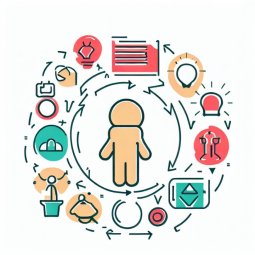Understanding and documenting the exact needs of a digital project is crucial for its success, especially if you are taking a customised or bespoke route to your applications. This process, known as requirements gathering, involves detailed communication with stakeholders and careful planning to ensure that the final product aligns with organisational goals.
What are Complex Digital Projects?
Digital projects can cover a wide range of initiatives within an organisation. These might include:
- CRM procurement and implementation: Selecting and heavily customising & integrating into a customer relationship management system.
- App development: Creating custom software or applications for internal or external use.
- Website redesigns: Overhauling an organisation’s online presence to better engage with clients and stakeholders.
- Cloud migration: Moving infrastructure, data, or applications to a cloud-based environment.
- Data analytics platforms: Implementing systems for better data analysis and reporting capabilities.
Each type of project will have its unique requirements, and understanding these at the outset is critical to delivering the right solutions.
Categories of Requirements
When gathering requirements, it's essential to differentiate between functional and non-functional requirements:
- Functional Requirements: These specify what the system should do. For example, a volunteer registration portal should allow volunteers to apply through the portal, update their details, and receive notifications.
- Non-Functional Requirements: These define how the system should perform. For instance, compliance with data storage regulations (e.g., data must be stored in Australia for privacy reasons), system performance standards, or accessibility for users with disabilities.
Process Overview
The process of gathering requirements should be structured and systematic to avoid common pitfalls like scope creep or stakeholder dissatisfaction. Following these steps ensures clarity, alignment, and successful project execution.
Step 1: Preliminary Analysis
Engage key stakeholders to outline the project vision, objectives, and scope. This step is crucial for understanding what the organisation aims to achieve and why the project is necessary. A preliminary analysis should answer:
- What are the high-level goals of the project?
- Who are the key stakeholders and end-users?
- What is the expected outcome or impact of the project?
Step 2: Capturing Requirements
The next step involves gathering detailed requirements from stakeholders. It’s essential to use a mix of methods tailored to the project's context. Some techniques include:
- Interviews: Conduct in-depth discussions with a broad range of stakeholders to gather diverse needs and expectations.
- Surveys: Distribute surveys to uncover less obvious requirements by asking specific, targeted questions.
- Observations: Watch end-users interact with current systems to identify pain points and areas for improvement.
- Workshops: Organise workshops to bring different stakeholder groups together. Workshops are an excellent forum for discussing and harmonising viewpoints, refining requirements, and resolving potential conflicts early.
Step 3: Documenting Requirements
Once gathered, it’s crucial to document the requirements clearly and in a structured format. This documentation should be accessible and understandable to all project stakeholders. Common formats include:
- User stories: Short descriptions of how users will interact with the system.
- Requirements specification documents: A formalised document listing all functional and non-functional requirements.
- Process flow diagrams: Visual representations of system workflows and interactions.
Step 4: Validating Requirements
Validating the documented requirements ensures accuracy and completeness. Review the information with all stakeholders to confirm that critical needs are captured and there is mutual agreement before moving into development. This step also helps to prevent misunderstandings or gaps that could lead to costly revisions later.
Technology and Tools
Utilising modern tools can enhance the efficiency and accuracy of the requirements gathering process. Popular tools for documentation and developer tracking include:
- Atlassian Jira: For tracking issues and managing requirements.
- Microsoft Azure DevOps: For project management and tracking development progress.
- Atlassian Confluence: A collaborative platform for maintaining transparency and open communication among team members.
These tools help keep everyone aligned and ensure that requirements are visible and actionable throughout the project lifecycle.
Continuous Improvement
It's important to regularly update and improve your requirements gathering process based on feedback from completed projects. This iterative improvement helps refine your methods and techniques, making them more effective for future digital initiatives.
Example improvement steps:
- Post-project reviews: Gather feedback on what worked well and what didn’t during requirements gathering.
- Lessons learned: Document lessons learned to avoid repeating mistakes or inefficiencies in future projects.
Training and Resources
To stay ahead in modern digital project management, training is essential for project managers and analysts. Providing formal training on the latest methodologies and tools used in requirements gathering can significantly improve project outcomes. Recommended certifications include:
- CBAP (Certified Business Analysis Professional): Focuses on advanced knowledge of business analysis.
- PMI-PBA (PMI Professional in Business Analysis): Concentrates on the intersection of project management and business analysis.





Status message
Thanks for rating this guide.